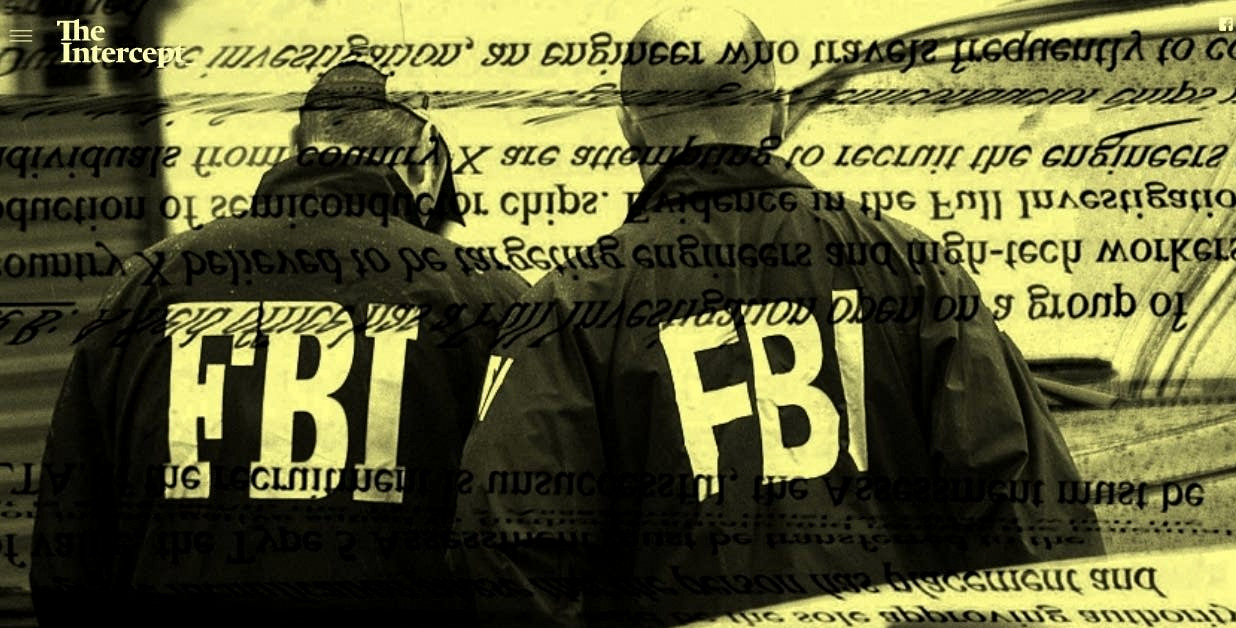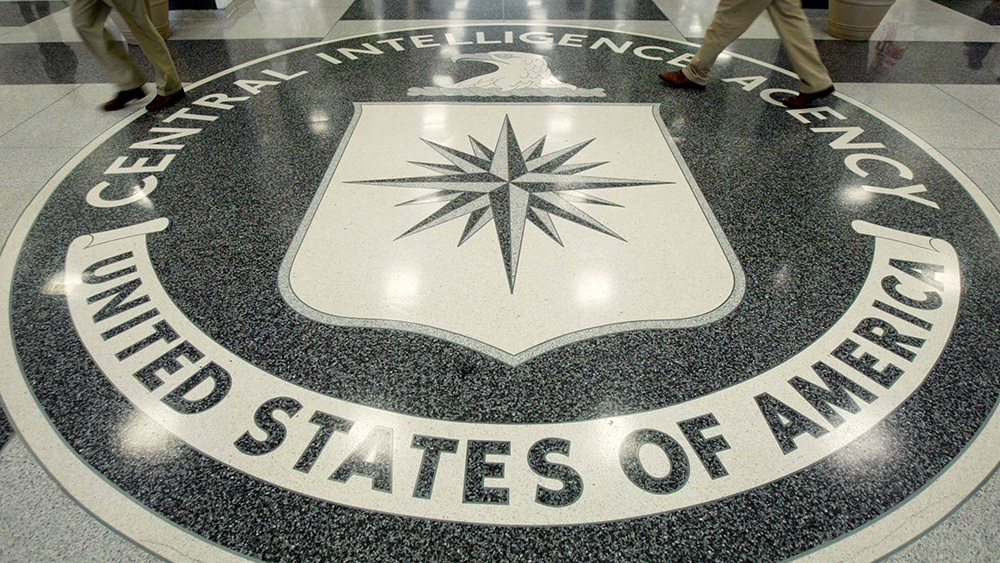Whom Not To Trust - U.S. Government Indicts Another Intercept Source

Another source that provided government secrets to The Intercept has been uncovered and indicted by the U.S. government.
The Intercept was created to privatize the National Security Agency documents leaked by NSA contractor Edward Snowden. The online magazine is financed by Pierre Omidyar, the founder of Ebay, who's is known for many shady connection to Obama administration and for promoting various regime change efforts.
In June 2017 we wrote about the first case in which an Intercept source got burned:
Yesterday The Intercept
published a leaked five page NSA analysis about alleged Russian interference in the 2016 U.S. elections. Its reporting outed the leaker of the NSA documents. That person, R.L. Winner, has now been arrested and is likely to be jailed for years if not for the rest of her life.
FBI
search (pdf) and arrest warrant (pdf) applications unveil irresponsible behavior by the Intercept's reporters and editors which neglected all operational security trade-craft that might have prevented the revealing of the source. It leaves one scratching one's head if this was intentional or just sheer incompetence. Either way - the incident confirms what skeptics had long determined: The Intercept is not a trustworthy outlet for leaking state secrets of public interests.
Our mistrust towards The Intercept get reinforced by the arrest of another of The Intercept's sources.
Today the Justice Department arrested and charged a former U.S. Airforce soldier, Daniel Everette Hale, 31, of Nashville, Tennessee, who had worked at the National Security Agency (NSA), as an intelligence analyst in Afghanistan, and at the National Geospatial Intelligence Agency (NGIA). The Justice Department alleges that Hale leaked several secret and top secret powerpoint presentations and papers to an online outlet:
According to allegations in the indictment, beginning in April 2013, while enlisted in the U.S. Air Force and assigned to the NSA, Hale began communicating with a reporter. Hale met with the reporter in person on multiple occasions, and, at times, communicated with the reporter via an encrypted messaging platform. Then, in February 2014, while working as a cleared defense contractor at NGA, Hale printed six classified documents unrelated to his work at NGA and soon after exchanged a series of messages with the reporter. Each of the six documents printed were later published by the reporter’s news outlet.
According to allegations in the indictment, while employed as a cleared defense contractor for NGA, Hale printed from his Top Secret computer 36 documents, including 23 documents unrelated to his work at NGA. Of the 23 documents unrelated to his work at NGA, Hale provided at least 17 to the reporter and/or the reporter’s online news outlet, which published the documents in whole or in part. Eleven of the published documents were classified as Top Secret or Secret and marked as such.
The indictment (pdf), filed on March 7 under seal, includes a list of the meetings and communications that Hale had with the reporter. The first one took place during the reporter's book tour in April 2013 in Washington DC. During that time frame Jeremy Scahill, one of the Intercept's founding editors, was on a national book tour promoting his book about Blackwater. Several stories written by Scalhill based on secret documents were published in the time frames given in the indictment.
The Associated Press notes of the case:
Court papers do not identify by name the reporter who allegedly received the leaks, but details in the indictment make clear that Jeremy Scahill, a founding editor of The Intercept, is the reporter who received the leaks.
The indictment states that many of the classified documents were disclosed in an October 2015 news article.
On October 15, 2015, Scahill published an article on The Intercept titled "The Assassination Complex" that relies on "a cache of secret slides that provides a window into the inner workings of the U.S. military's kill/capture operations at a key time in the evolution of the drone wars."
There are more documents that Scahill published about that fit the time frame and the descriptions in the indictment.
In July 23 2014 The Intercept published Blacklisted - The Secret Government Rulebook For Labeling You a Terrorist
The Obama administration has quietly approved a substantial expansion of the terrorist watchlist system, authorizing a secret process that requires neither “concrete facts” nor “irrefutable evidence” to designate an American or foreigner as a terrorist, according to a key government document obtained by The Intercept.
The piece was written by Jeremy Scahill and Ryan Devereaux.
In August 2014 The Intercept published the Watch Commander - Barack Obama’s Secret Terrorist-Tracking System, by the Numbers written by the same reporters:
Nearly half of the people on the U.S. government’s widely shared database of terrorist suspects are not connected to any known terrorist group, according to classified government documents obtained by The Intercept.
On April 17 2015 Scahill wrote a story about the use of a U.S. military base in Germany for drone strikes.
TOP-SECRET U.S. intelligence document obtained by The Intercept confirms that the sprawling U.S. military base in Ramstein, Germany serves as the high-tech heart of America’s drone program.
...
The top-secret slide deck, dated July 2012, provides the most detailed blueprint seen to date of the technical architecture used to conduct strikes with Predator and Reaper drones.
All the above stories, and more, seem to fit to the descriptions in the indictment of the items Hale printed or copied while he worked for U.S. agencies.
The indictment says that documents Hale obtained and handed to a reporter were later published in a book by the same writer.
In 2016 Scahill coauthored the book The Assassination Complex : Inside the Government's Secret Drone Warfare Program
The indictment does not say how the government found out that Hale provided the documents to Scahill. But the two seem to have at times communicated openly via phone, email and through text messages. That should have been a no-no. The government recovered at least parts of those communications. Hale attended several of Scahill's book tour events. Beyond that Hale openly communicated with 'a confident' about his contacts with Scahill. Later Scahill and Hale used the encrypted chat tool Jabber. Hale also used Tails, a software package The Intercept recommends for leaking documents to it.
It is quite possible that the Justice Department will also file charges against Jeremy Scahill. The first contacts with Hale and the first leaks by Hale were in the first half of 2013, when Hale was still enlisted and worked at the NSA. In July Hale emailed a resume to Scahill which he wanted to use to find a job with a defense contractor who leases people with security clearances to other U.S. agencies. They seem to have discussed the resume by phone. Hale was later hired by such a contractor and worked at the NGIA. There he copied the secret and top secret documents and presentations that seem to be the objects of Scahill's later reporting.
That Scahill discussed Hale's resume with him could be construed as active help to gain access to secrets that would then be leaked to The Intercept. The U.S. currently seeks the extradition of Julian Assange from Britain under the allegation that Assange actively helped Chelsea Manning to escape scrutiny by using her access to secret documents under a different account than her own. Assange is the editor of Wikileaks.
While it is not known how the government found out that Hale leaked the documents in questions, its knowledge of phone and text contacts show that all open communication with any Intercept reporter will likely be intercepted by the relevant agencies.
It is laudable that Hale leaked the secret information about Obama's drone wars and assassination campaigns. It is laudable that The Intercept published those stories.
But that its founder made lots of money from government contracts while The Intercept reported on less than 5% of the Snowden papers and recently shut down access to the them leaves a very bad taste.
That R.L. Winner went to jail because an Intercept reporter, who was known to not be trustworthy, 'mishandled' the leak is terrible. That a second source is now under arrest after lengthy open communication with another Intercept writer only reinforces our recommendation:
Do not trust The Intercept.


